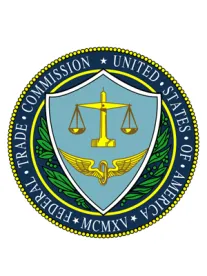Each year the Federal Trade Commission (FTC) announces adjustments to the dollar thresholds for notification (and exemptions to notification) under the Hart-Scott-Rodino Antitrust Improvements Act of 1976, as amended (HSR Act). These adjustments may be relevant to hundreds or thousands of transactions each year (acquisitions, investments, joint ventures and nonprofit restructurings) as businesses and lawyers determine whether a particular transaction must be presented to the Department of Justice and the FTC for pre-closing antitrust review. The new thresholds for 2017 have now been announced.
Throughout the last year the FTC made a number of other adjustments: to staff interpretations, policies, technology and instructions. Most or all of these changes will affect relatively few potential filers in any given year, but affected parties could find their assumptions about HSR compliance challenged if they haven’t kept up with the latest tweaks coming out of the Premerger Notification Office (PNO). For a quick tour of the PNO’s announcements, check the FTC website. Here are a few of last year’s developments:
“4(c) Documents” regarding solely foreign markets
It used to be that documents analyzing or evaluating a transaction only with respect to its impact on foreign markets (and not with respect to U.S. markets) could be omitted from the materials produced to the agencies as “4(c) documents” or “4(d) documents.” No more. The PNO staff’s updated guidance can be found here, and in the updated informal guidance and tip sheet found elsewhere on the FTC’s website.
New LBO debt and the “size of transaction”
Until this summer, new debt taken on to finance an acquisition (and secured by the target) would count toward the “size of transaction” HSR jurisdictional test if the debt was the buyer’s but not if the target were the borrower. Now, all new LBO debt counts toward the size of the transaction calculation whether it is the buyer or the target that is obligated (see “LBOs and the size of transaction test”).
New instructions and style sheet regarding filing on DVDs
Both the HSR Notification and Report and the style sheet have been updated to reflect the PNO’s decision to accept filings on DVDs, subject to strict formatting standards (see the Federal Register notice). Note that the DVDs must be in searchable format and that the agencies must still receive hard copies of the cover letters, certification page and affidavit.
Classifying foreign entities under the HSR rules
Is that foreign company more like a corporation or more like an LLC? The previous guidance has been updated and simplified and now rests solely on whether the entity issues securities that allow the holders to vote for a supervising board of directors. The current guidance may be reviewed here. The distinction between corporations and “non-corporate entities” is important because the HSR rules for the two kinds of entities overlap but are not identical.
Maximum civil penalty rates for HSR filing violations go up 150 percent
This one cannot be blamed on the FTC. Congress mandated a government-wide review and inflation-adjusted revision to civil penalties across all agencies (through The Federal Civil Penalties Inflation Adjustment Act Improvements Act of 2015). As a result, the maximum penalty for a continuing HSR filing or waiting period violation increased from $16,000 per day to $40,000 per day, and in the first annual adjustment (published just this week) to $40,654 per day (and that really adds up quickly). Read more about the raises in, “FTC Raises Civil Penalty Maximums to Adjust for Inflation.” Find information on the first annual adjustment in the Federal Register.
Annual HSR notification thresholds and exemption thresholds
Transactions that meet a “size of transaction” test and (usually) a “size of parties” test generally will require HSR notification to the DOJ and FTC unless an exemption to the notification rules is available. There are some nuances to the notification thresholds but, in general, a transaction may be notifiable if it is valued at more than $80.8 million and one party has assets or sales greater than $16.2 million and the other party has assets or sales greater than $161.5 million. Transactions with a value greater than $323 million may be notifiable even if the “size of parties” threshold is not met.
The previous thresholds and the newly revised thresholds, as well as the original baseline thresholds introduced late in 2000, are set forth below.
|
Original Threshold |
2016 Threshold |
Revised 2017 Threshold |
|
$10 million |
$15.6 million |
$16.2 million |
|
$50 million |
$78.2 million |
$80.8 million |
|
$100 million |
$156.3 million |
$161.5 million |
|
$200 million |
$312.6 million |
$323 million |
|
$500 million |
$781.5 million |
$807.5 million |
HSR filing fee thresholds are also adjusted as follows:
-
$45,000 for transactions valued in excess of $80.8 million but less than or equal to $161.5 million;
-
$125,000 for transactions valued in excess of $161.5 million but less than or equal to $807.5 million; and
-
$280,000 for transactions valued in excess of $807.5 million.




 />i
/>i

